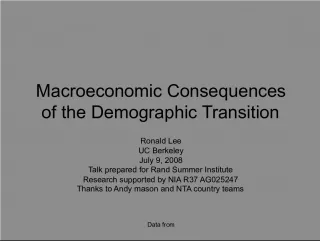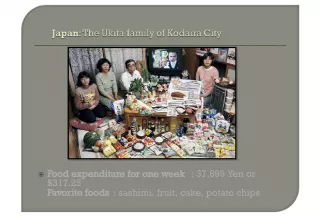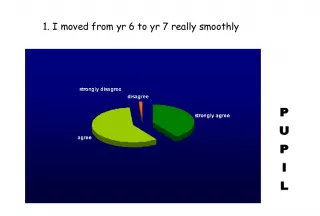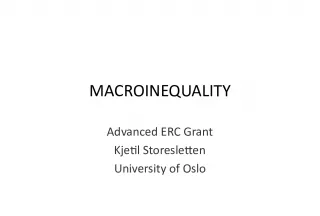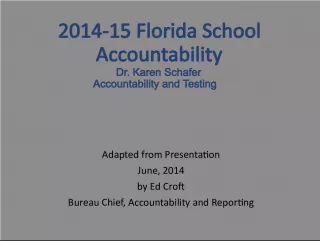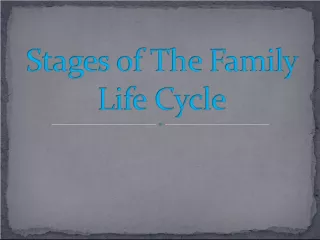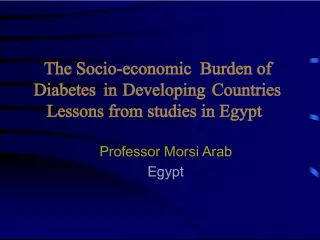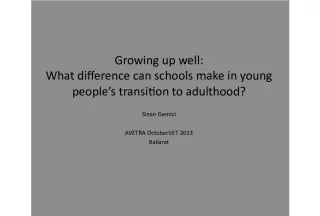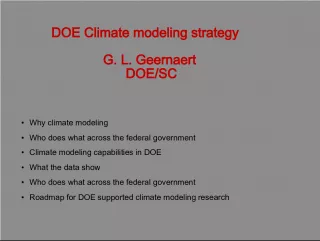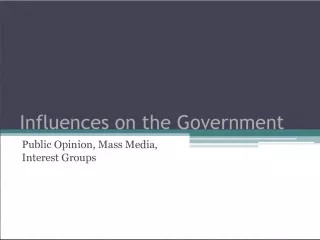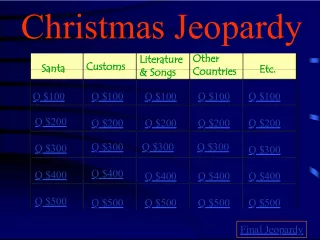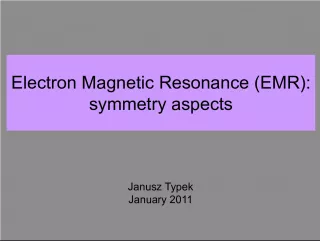Investigating Macroeconomic Determinants of Happiness in Transition Countries: Importance of Government Expenditure


This paper examines the impact of macro factors on happiness in transition countries with a focus on the role of government expenditures. The study uses a survey dataset and econometric analysis to show that government expenditure significantly and non-linearly affects happiness.
- Uploaded on | 0 Views
-
 paigegomez
paigegomez
About Investigating Macroeconomic Determinants of Happiness in Transition Countries: Importance of Government Expenditure
PowerPoint presentation about 'Investigating Macroeconomic Determinants of Happiness in Transition Countries: Importance of Government Expenditure'. This presentation describes the topic on This paper examines the impact of macro factors on happiness in transition countries with a focus on the role of government expenditures. The study uses a survey dataset and econometric analysis to show that government expenditure significantly and non-linearly affects happiness.. The key topics included in this slideshow are Happiness, macroeconomic factors, government expenditure, transition countries, survey data,. Download this presentation absolutely free.
Presentation Transcript
1. Investigating Macroeconomic Determinants of Happiness in Transition Countries: How Important is Government Expenditure? by L. M. Perovic and S. Golem Discussant: K. Zigic CERGE-EI Prague, Czech Republic The Fifteenth Dubrovnik Economic Conference Organized by the Croatian National Bank
2. Summary of the Paper Objective: Analysis of the role of macro factors and especially government expenditures for happiness Methodology: Based on survey data Ordered logit econometric analysis of dataset constructed from survey respondent-level data on happiness and social characteristics and macroeconomic variables Conclusions Government expenditure significantly and non-linearly influences happiness in transition countries
3. Main Variables Used Variable Source Description Happiness World Values Survey Waves 3, 4 and 5 Taking all thing together, would you say you are: 1: not at all happy, 2: not very happy; 3: quite happy and 4: very happy. Government expenditure World Development Indicators, World Bank (2008) General government final consumption expenditure as a percentage of GDP (annual %)
4. Measuring the Quality of Life: Overview GDP very bad measure of the quality of life (but often the only one readily available) Measures derived from GDP e.g. GDP adjusted for leisure and pollution Hicks, Kaldor, and others (Measure of Economic Welfare, Net Economic Welfare) Non-economic indicators social, health indicators Infant mortality, life expectancy Happiness J. Bentham utility in terms of psychological states Feeling good enjoying life and feeling it is wonderful. Layard (2003) Can we measure it by GDP? In spite of economic growth people in USA, Japan, UK do not seem to be happier than 50 years ago. Hedonic adaptation? But Deaton (2007) finds relationship between life satisfaction and per capita GDP Can we measure it by surveys? D. Kahneman, A. Kruger: Day Reconstruction Method Or borrow methods from neuro-science? D. Prelec : positive feelings correspond to brain activity in the left side of the pre-frontal cortex, somewhat above and in front of the ear. Not only tangible wealth matters, but also our ability to appreciate and enjoy life. We should also have teachers that will teach us the ways to happiness R. Layard (2007)
5. Easterlin (2003) Analysis of happiness that attempts to bridge the gap between psychology (set theory) and economics (revealed preferences) Focuses on aspirations/social comparison and hedonic adaptation Differentiates between nonpecuniary factors (marriage, divorce, health) with lasting effects and pecuniary factors with possibly only temporary effects (due to hedonic adaptation and social comparison) Traces happiness of identical individuals in time Two of Easterlins conclusions relevant to the discussed paper: Policies to improve health or facilitate more time with ones family are consistent with greater happiness Increase in income does not bring with it a lasting increase in happiness
6. Happiness Variable In the Discussed Paper Data from World Value Survey used Not too many details about the data provided in the paper Methodology and quality of the data on happiness (World Value Survey) should be analyzed in more detail in the paper as it is crucial for the whole analysis Possible problems with the data E.g. Croatia seems to have been included in two waves (1996, 1999). Is this representative enough? While the data on happiness are on respondent level, from the description on WVS web it seems that the same set of respondents is not tracked during different waves of the survey (i.e. random sampling in each wave is used). Is this true? If yes, then this could be a problem As e.g. Easterlin (2003) discusses, life-cycle and hedonic adaptation do matter a lot in analysis of happiness The data are rather a sequence of cross-sections than a real panel Description of equation 1 (indexes) can be misleading
7. Sampling used in Croatia (1999 Survey) Source: WVS website Use was made of two-stage probability sampling. At the first stage 63 locations were selected from a list of all towns/villages in Croatia that was sorted by administrative districts and degree of urbanisation. In each location 16 interviews (systematic selection) were conducted. Some minor corrections were made to adjust for urban representation of each country. More than one sampling point were made in larger cities (e.g. Zagreb had 10 sampling points). At the second stage respondents were selected randomly within the household (using the Throdal and Carter method - balancing gender and age) from a list of addresses in each location. According to description, the same methodology used in 1996. But how about the stability of the sample and ability to track the original individuals?
8. Feeling of Happiness: Croatia in 1996 Source: World Value Survey
9. Feeling of Happiness: Croatia in 1999 Source: World Value Survey
10. Other Comments on Variables Used There seem to be substantial (extreme) variability in some of the variables (Table 2), especially in inflation It seems that there may be some outliers Did you test robustness of your results with respect to the role of the outliers E.g. if it is the case by omitting observations for a country (countries?) that acts as an outlier with respect to inflation? On the other hand, variability in happiness variable is fairly low as expected, most respondents were between 2 and 3 on the 4 grade scale This is not unusual, but may lead to question concerning quality of relationship between very variable macroeconomic variables and the happiness variable No additional information about the properties of the resulting estimates (i.e. no other than t-tests) were given Do you have more details on fit/predictive powers of the model or some specification tests?
11. Table 2: Summary Statistics Variable Obs Mean Std. Dev. Min Max Happiness 30057 2.72 0.71 1 4 Sex 30820 1.52 0.49 1 2 Age 30803 44.87 16.85 17 101 Education 30649 4.64 2.16 1 9 Marital status 30689 2.48 2.08 1 6 Employme nt status 30543 3.14 2.17 1 8 Income scale 26468 4.52 2.50 1 10 Gen. govt. exp. 30828 17.72 5.87 5.69 27.78 Inflation 30828 47.81 192.27 0.54 1058.37 Unemploy ment 30828 12.79 6.66 5.8 34.5 GDP per capita 30828 10520.81 4422.48 3631.99 23010
12. Who is Happy? Average Happiness 1995-2005 How much people enjoy their life-as-a-whole on scale 0 to 10 Top > 7,7 Middle range 6,0 Bottom <4 Denmark 8,2 Phillipines 6,4 Armenia 3,7 Switzerland 8,1 India 6,2 Ukraine 3,6 Austria 8,0 Iran 6,0 Moldova 3,5 Iceland 7,8 Poland 5,9 Zimbabwe 3,3 Finland 7,7 South Korea 5,8 Tanzania 3,2 Source: World Database of Happiness, Ruut Veenhoven, Erasmus Univ. Rotterdam USA 17 th place, Czech R. 40-43 rd place out of 95 countries Results based on surveys
13. Life Satisfaction and GDP p. Capita Source: Deaton (2008)
14. Interesting Unaswered Question Authors assume inverted u-shaped relationship between government expenditures and happiness E.g. we hypothesize that there is a useful amount of government expenditures that positively influences happiness Find that marginal effects correspond with expectations (Table 4 and 5) and are significant Logical question: have you tried to derive the optimal levels of government spending for the analyzed countries?
15. Conclusion: Final Comment Interesting paper based on a fairly wide dataset. However, consistency and properties of the dataset needs better description and clarification Approach standard in analysis based on probit/logit regressions with similar types of survey data and macroeconomic characteristics but adds share of government expenditures to the set of variables Compare e.g. Di Tella, MacCulloch, Oswald (2003) that represent the standard form of similar studies Survey could focus more on literature from the frontier segment between psychology and economics such as e.g. Easterlin (2003) More attention should be paid to the variables describing happiness, it has to be made clear whether the same individuals were or were not tracked in different waves Econometrics: more details on the results and tests of the results should be provided Analysis of results: results can be dangerous for fiscal stability if interpreted literally It may be useful to try to experiment with searching optimal level of government spending after taking care about interactions between spending and other variables in the model
16. References A. Deaton: Income, Health, and Well-Being Around the World: Evidence From the Gallup World Poll. Journal of Economic Perspectives Volume 22, Number 2 Spring 2008 B.S. Frey, A. Stutzer: Happiness Research: State and Prospects. Review of Social Economy, June 2005 R. Layard: Happiness: Has Social Science Have a Clue? Lionel Robbins Memorial Lecture , LSE, March 2003 Easterlin R.A. (2003): Explaining happiness. Proceedings of the National Academy of Sciences of the United States of America, September 16, 2003 Di Tella R., MacCulloch R.J., Oswald A.J. (2003): The Macroeconomics of happiness. The Review of Economics and Statistics, November 2003, 85 (4): 809-827 World Database of Happiness: http://worlddatabaseofhappiness.eur.nl/ World Values Survey http://www.worldvaluessurvey.org/
